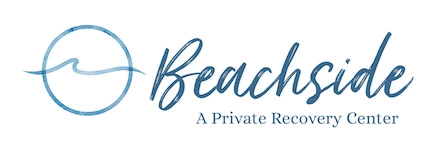The risk of developing an alcohol or drug addiction is not equal for everyone. A variety of genetic and environmental factors contribute to an individual’s likelihood of developing an addiction. Fortunately, having specific risk factors in your background does not make addiction a foregone conclusion. Understanding the risk factors, and how to mitigate them, can help reduce the probability of an addiction for you or your loved one.
The Role of Family History
Having family members with a history of addiction puts individuals at higher risk of developing an addiction themselves. The National Institute on Drug Abuse (NIDA) cites studies involving identical twins, fraternal twins, adoptees, and siblings, which show that as much as half of a person’s risk of becoming addicted to nicotine, alcohol, or other drugs is related to genetics.
The causal relationship between family history and addiction is much more complex than a link to genetics. There also are environmental factors involved. Children of addicted parents spend their formative years in a household populated by those who regularly drink and abuse drugs, and thus they may grow up thinking that using alcohol and recreational drugs is part of everyday life.
Trauma experienced in the home, including physical or verbal abuse, is another risk factor that may arise for one’s family history. Often the effects of this trauma do not manifest themselves until years later, at which point adults may begin drinking or using drugs as a way of coping with disturbing memories from childhood.
Age
Regardless of their family history, individuals who start drinking or abusing drugs at an early age are more likely to become addicted than those who are older. In its publication, Drugs, Brains, and Behavior: The Science of Addiction, NIDI observes that the prefrontal cortex has not yet fully developed in teens and adolescents. These youngsters have poorer impulse control, which makes them more susceptible to risky behavior and peer pressure. Moreover, developing a substance abuse problem during this crucial stage of brain development may have long-lasting effects that follow the individual into adulthood.
Other Mental Health Conditions
The National Institute of Mental Health reports that substance use disorder (SUD) often coexists with other mental health disorders, such as anxiety, depression, attention-deficit hyperactivity disorder (ADHD), bipolar disorder, personality disorders, and schizophrenia.
Mental disorders like anxiety and depression may contribute to a person’s risk of developing a substance abuse problem. The converse can also be true, with SUDs contributing to development of other mental disorders because of changes in brain structure and function. By being aware of the higher risk of substance abuse among these individuals, family members and the individual’s mental health care team can be on closer watch for any potential warning signs.
Societal Factors
In its publication, NIDI identified several societal risk factors that increase the probability of alcohol or drug addition, such as lack of parental supervision; availability of drugs at school or in the community; and poverty. While these societal factors increase the risk, there are other societal factors that can alleviate risk, such as more parental monitoring and support, adoption of school anti-drug policies, and increased community resources to reduce drug use and help individuals recover from their addictions.
Stressful Employment
Stress at work also is linked to higher risk of alcohol or substance abuse. The Substance Abuse and Mental Health Services Administration reports that certain occupational classifications—such as hospitality and food service; construction; and arts and entertainment—have higher rates of substance use disorders than others. In addition, SAMHSA notes that those in managerial positions have a higher degree of risk associated with the responsibilities of their profession.
The Addictiveness of the Drug
The addictiveness of the drug itself is another risk factor—and the reason that opioid use has reached epidemic levels in the U.S. The U.S. Department of Health and Human Services warns that opioids are highly addictive and, even when used as prescribed by a doctor, can lead to a substance abuse disorder if the drugs are not taken with great care. Synthetic opioids such as fentanyl are a major contributor to the current epidemic, having potency 50 to 100 times higher than morphine.
Seeking Help
By recognizing if you or a loved one have higher-than-usual risks for alcohol or drug addiction, you’ll be more prepared to identify a potential problem before addiction takes hold.
Don’t ignore the warning signs. If you’re missing work or social obligations because of drug use or if you’re loved one is suddenly lying or being secretive about their behavior, this could indicate a substance abuse problem. Understand what is happening, and reach out for professional assistance in treating the potential addiction.
Beachside Rehab will treat your addiction and the reasons behind it. Contact our trained admissions counselors at 866-349-1770 to discuss our dual diagnosis treatment.
Sources:
National Institute on Drug Abuse, “Genetics: The Blueprint of Health and Disease,” https://nida.nih.gov/research-topics/prevention
National Institute on Drug Abuse, “Drugs, Brains, and Behavior: The Science of Addiction: How Science Has Revolutionized the Understanding of Drug Addiction,” https://nida.nih.gov/publications/drugs-brains-behavior-science-addiction/preface
Substance Abuse and Mental Health Services Administration, “Substance Use and Co-Occurring Mental Disorders,” https://www.nimh.nih.gov/health/topics/substance-use-and-mental-health
U.S. Department of Health & Human Services, “Prevent Opioid Abuse and Addiction,” https://www.hhs.gov/opioids/prevention/index.html

